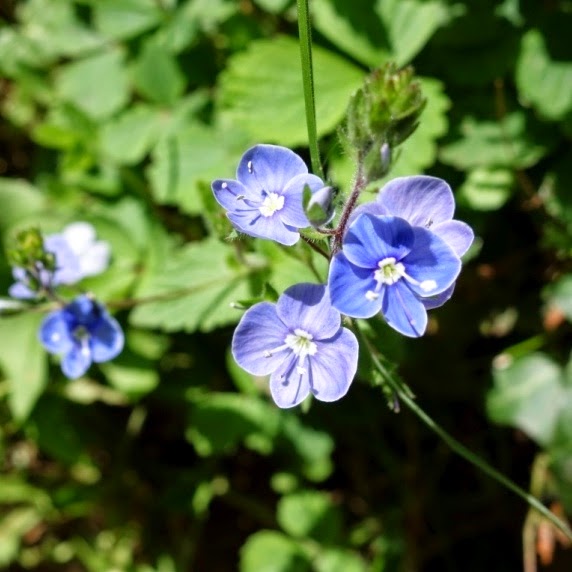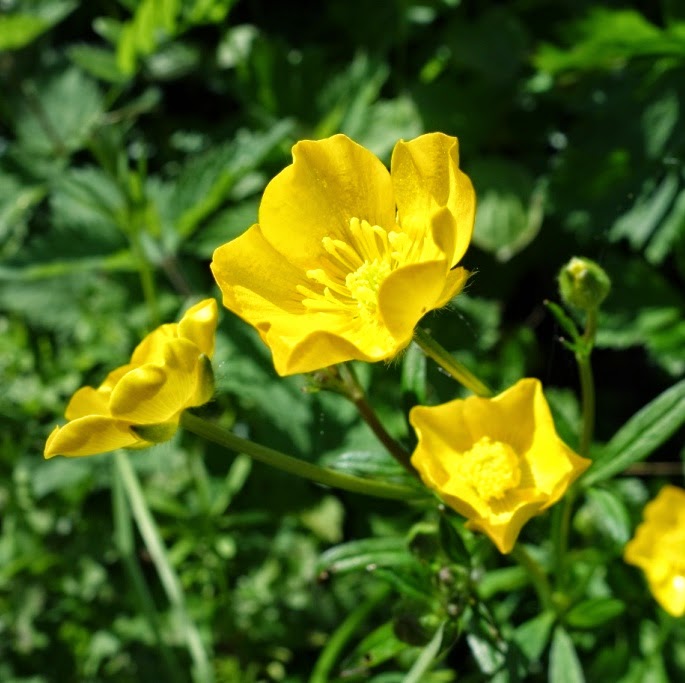Common hedgerow plants
Often thought of as weeds, ivy, broad-leaved dock, nettle, and bramble are all nevertheless invaluable food sources.
 |
| Young ivy leaves |
 |
| Broad-leaved dock |
 |
| Young nettle leaves |
With over 320 micro-species of bramble, there is a wide variation in appearance.
 |
Contrasting forms of bramble (above and below
 |
Hedgerow flowers
In abundance in May were all of the following:
 |
| Greater stitchwort |
 |
| Germander (Bird's-eye) speedwell |
 |
Red campion (above and below)
 |
 |
Common vetch (above and below)
 |
 |
Creeping buttercup (above and below)
 |
 |
| Herb Robert |
 |
| Garlic mustard |
Love it or loathe it, cow parsley creates the defining look of lane-sides in May. It is the first to flower of several members of the large family of umbellifers (the branches of the flowers rise from a single point like the ribs of an umbrella).
 |
| Cow parsley |
Delicate in appearance, it is particularly important to distinguish it from the much more robust hemlock water dropwort that – as its name suggests – loves freshwater ditches. All parts of this plant are toxic to humans if ingested.
 |
Hemlock water dropwort (above and below)
 |
Halfway along this lane is a very lovely area of damp, shady, unspoilt woodland bordering a small stream.
Here were found the last of the bluebells.
 |
| Fading bluebells |
More importantly and rarely, there is a patch of pink purslane here. During the Parish Wildflower Survey in 2009, this was the only area of the parish where it was found, although last month we did see a single plant in Village Road.
 |
| Pink purslane (above and below) |
Also in this area were young Hart’s-tongue ferns and Male fern, one of our most common ferns.
 |
| Hart's-tongue fern |
 |
| Male fern |
Birds
Birdsong has been plentiful and strident over the last few weeks. The black-cap warbler has made a good come-back this spring, and the white-throat warbler has recently appeared. This is a summer migrant which likes hedgerows near farmland – its distinctive tangled song is disjointed and snatchy. Swallows have also returned.
There used to be cuckoos until two years ago (but one has been heard on the Common recently), and larks (also heard once recently near Honey Lane) – but these are more rare now. There also used to be turtle-doves, but these are now endangered, having been reduced by habitat changes and the introduction of collared doves. Willow warblers have been heard at the top of Castle Lane.



























No comments:
Post a Comment